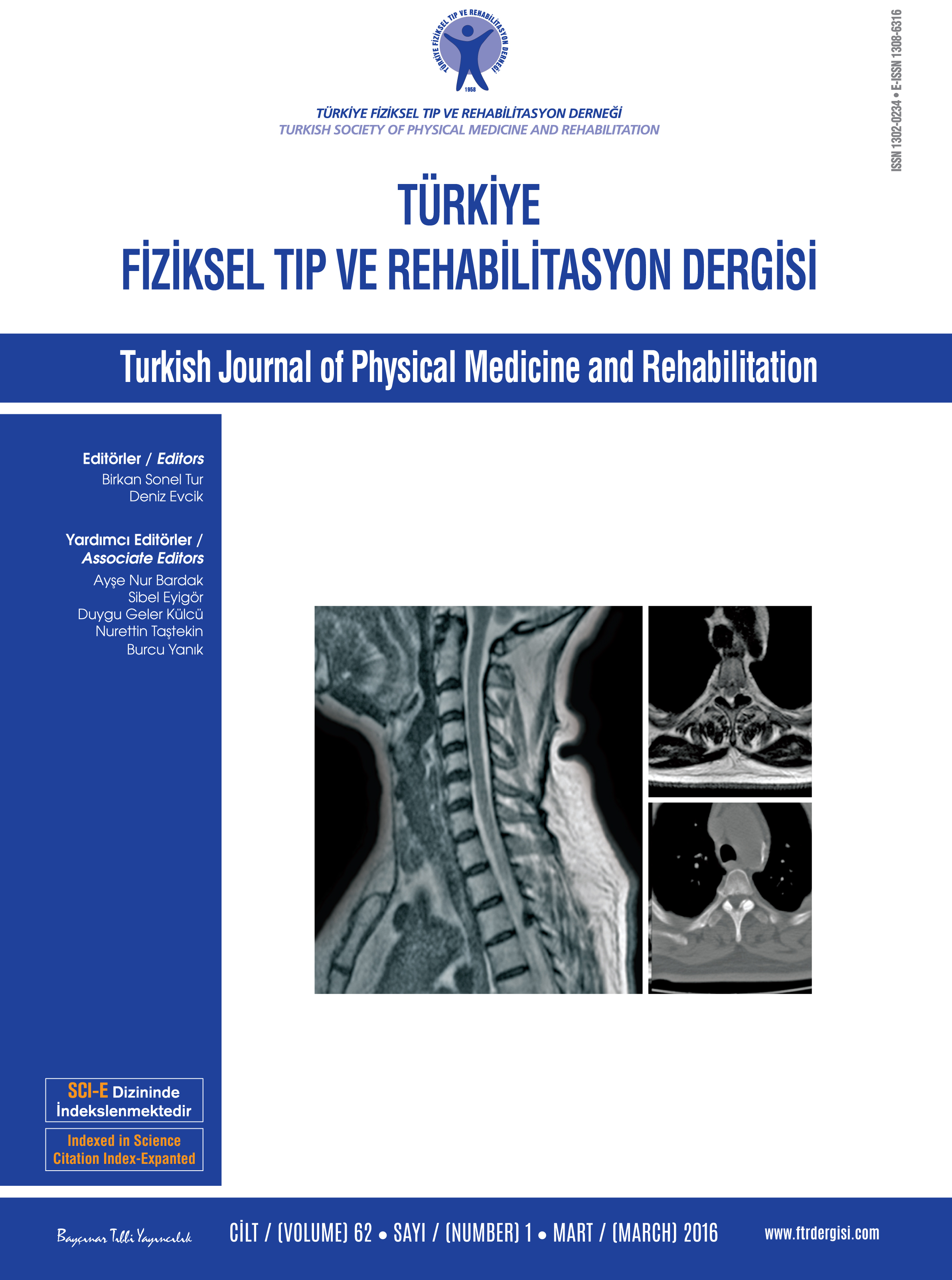Is spinal cord injury a risk factor for vitamin D deficiency?
Patients and methods: A total of 125 patients with SCI as the patient group and 142 patients with neurologically intact patients as the control group admitted to the inpatient or outpatient clinics of our Physical Medicine and Rehabilitation Hospital between January 2013 and December 2014 were included in the study. Data were retrospectively analyzed using the patient’s electronic medical records. Serum 25-hydroxyvitamin D [25(OH)D] levels >30 ng/mL were accepted as normal, 20 to 30 ng/mL as insufficiency, and <20 ng/mL as deficiency.
Results: There was no statistically significant difference in terms of age, sex, and blood sample collection season between the study and control groups (p>0.005). The median serum 25(OH)D level of the SCI group was 12.6 ng/mL (3-59) and 14.4 (5.5-79) ng/mL of the control group. A total of 95.2% of SCI patients and 95% of the controls were vitamin D deficient or insufficient. Serum 25(OH)D levels in the study group were statistically significantly lower than the control group (p=0.006), although it did not reach clinical significance. In both groups, serum 25(OH)D levels were independent from sex and blood sample collection season (p>0.05). Only ambulation status of SCI patients was found to be a significant factor affecting serum 25(OH)D levels in SCI group.
Conclusion: Although it is difficult to conclude that SCI is a risk factor for vitamin D deficiency or insufficiency based on the results of our study, vitamin D insufficiency and deficiency are common among non-ambulated SCI patients, in particular. Therefore, serum 25(OH)D levels should be analyzed on a routine basis in SCI patients and adequate supplementation should be performed in case of deficiency or insufficiency.
Keywords : 25 hydroxyvitamin D; rehabilitation; spinal cord injury; vitamin D deficiency

















